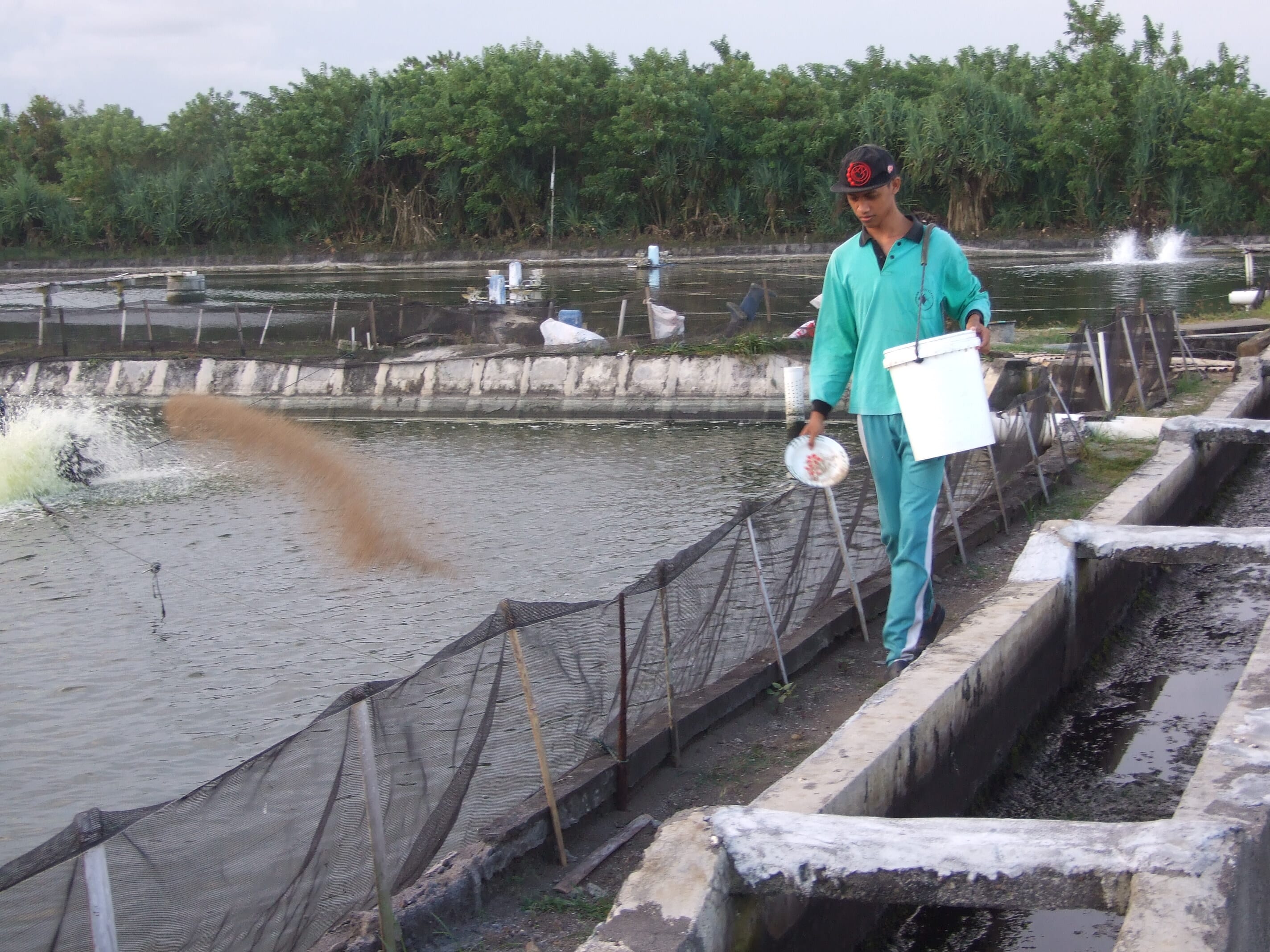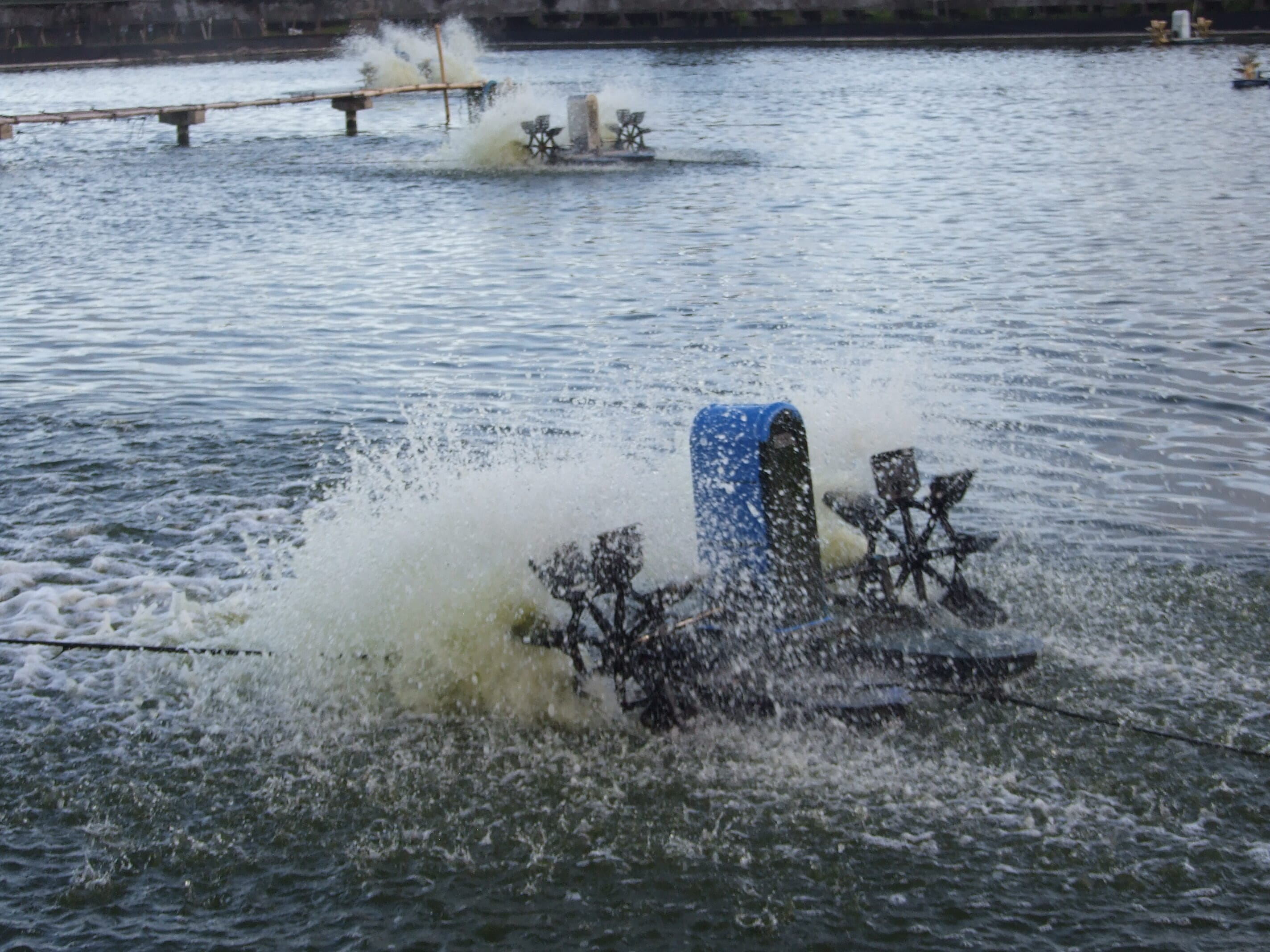Indonesia’s shrimp production is continually rising and their Maritime and Fishery Ministry has said, according to Antara News.com, that the country “has greater potential to increase production compared with other rivals especially in southeast Asia”, with central Java being one of the areas of Indonesia where there is potential to expand production.
Indiawan Praset Yo Huda is the production manager of a shrimp farm located south of Sola (Surakarta ), Indonesia, which is made up of 20 ponds. Each pond has an area of 60m2 and each pond can be cropped 3 times per year.
Each crop is roughly 7 tons so the whole farm produces in the region of 400 tons of shrimps per year, with prices being affected by shrimp production in Thailand and China in particular. Production is based on Vannamei species as the yield is superior to that of Monadon species ( Asian tiger shrimps).

The broodstock is sourced from CP (Charoen Pokphand) and is transported at 8 days of age from Jakarta. The farm is quite close to the sea and so sea water is pumped from the ocean and mixed with bore hole water, with the pond depth being maintained at 1.5m. Brackish water is needed, with a salinity of 5-7 ppt. to give the requisite water quality for the shrimps to thrive in.
The borehole water is regularly analysed for bacteria, including E.Coli and Salmonella. The salinity level of the water keeps changing and so has to be carefully monitored on a regular basis. Shrimps are initially kept in nursery tanks for 6-8 days after which they are transfered to the grow-out ponds for a further 90-100 days.
Electrically powered floating aeration machinery is working continually and hence the farm has two 35O kVA stand -by generators in case of mains power failure. Dead shrimps are an indication of infection and this is treated with antibiotics, although disease is quite rare.
The harvested shrimps are packed in ice and then transported to Jakarta for freezing. After harvesting , the ponds are emptied, cleaned and refilled, with algae being used to “seed” each pond.

The farm has 63 employees which may seem a large number by western standards, however there is a great deal of manual work to be carried out and feeding is by hand, 6 times each day, at 1, 5 and 9am and 1, 5 and 9pm. Feed is pelleted and unlike fish feed, the shrimp pellets sink. Feed is bought in monthly from a feed company which is a Samsung subsidiary, which is located in Lampung and is producing 360,000 tons of feed annually.
As far as feeding the shrimps is concerned, initially the feed contains 38% CP and this reduces to 35% CP. No antibiotic growth promoters are included in the feed, however the diets do contain MFeed, which is a natural growth promoter produced by French company Olmix.
Overall feed conversion was 1.35 :1 in 2011 and 1.25 : 1 in 2012. Crustaceans and fish convert feed extremely efficiently but ironically the majority of the protein in their diets is fishmeal. This is not an ideal situation but finding a cost effective alternative is far from easy.
September 2014




